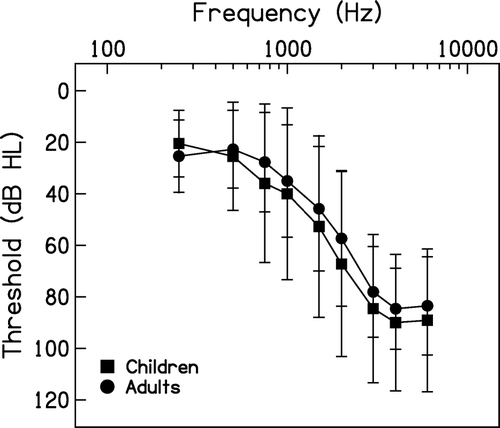Figures & data
Table 1. Description of the time course of each phase included in the study, corresponding objectives, and phase duration. CP refers to ‘conventional processing’ (i.e. fitting assessment without NFC enabled). Treatment assessment was completed with NFC enabled in the same hearing aid device used for CP evaluation.
Table 2. Individual participant hearing aid fitting schedule and corresponding adaption times, expressed in weeks.
Table 3. Case history information including previous hearing aid use and conventional make/model of hearing aid fitted for the purpose of the study. Hearing instruments used were prototype versions of the algorithm implemented in current Savia 311/411 hearing aids.
Figure 2. Mean speech sound detection thresholds for adults and children combined, plotted in dB HL for CP (conventional processing) and NFC (nonlinear frequency compression) study phases.
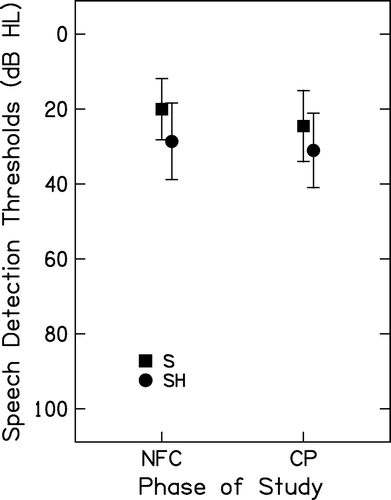
Figure 3. Mean speech recognition scores for adults and children combined, plotted in RAU for CP (conventional processing) and NFC (nonlinear frequency compression) study phases. Statistical significance based on post-hoc analysis at the level of p<.05 is displayed using an asterisk.
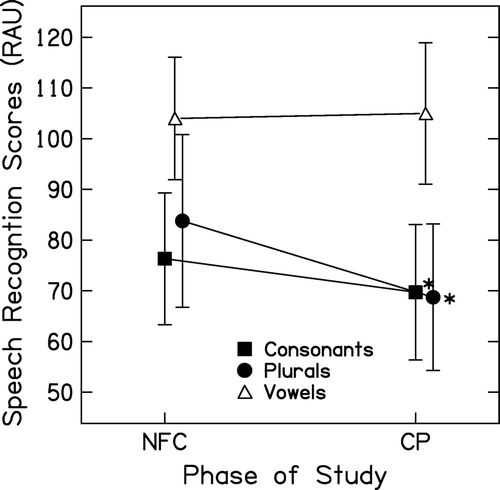
Figure 4. Individual speech sound detection thresholds plotted as difference scores, with a negative score indicating improvement with CP (conventional processing) and a positive score indicating improvement with NFC (nonlinear frequency compression). Results displayed in the top and bottom panes represent the adult and child participants respectively, with participants arranged in order of increasing hearing loss. Statistical significance is shown by asterisk symbols: * p<.10, ** p<.05, *** p<.01.
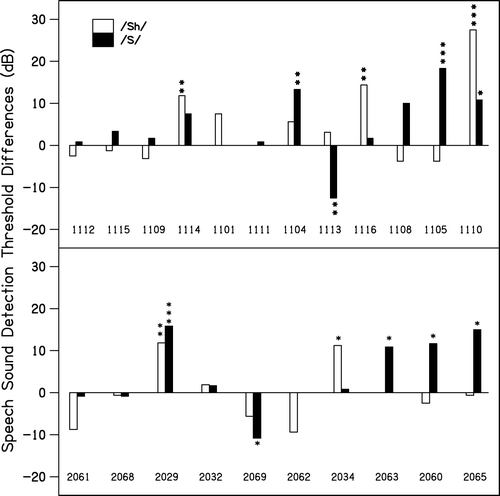
Figure 5. Individual speech recognition results for the adult participants, plotted for treatment (NFC) and treatment withdrawal (CP) study phases. Results are displayed from left to right in order of increasing hearing loss determined by better-ear, high-frequency pure-tone average (HFPTA). Speech recognition scores have been displayed in RAU. Statistical significance is shown by asterisk symbols: * p<.10, ** p<.05, *** p<.01. Individual participant figure panes include: subject number, NFC setting (cut-off in kHz, compression ratio), HFPTA (dB HL), hearing loss drop-off (point at which thresholds drop to 70 dB HL, in kHz), self-reported processing preference, and presence of cochlear dead regions (DR) in kHz right (R) and/or (L) side, with ‘Inc’ denoting inconclusive TEN test results.

Figure 6. Individual speech recognition results for the child participants, plotted for treatment (NFC) and treatment withdrawal (CP) study phases. Refer to legend on . Results are displayed from left to right in order of increasing hearing loss determined by better-ear, high-frequency pure-tone average (HFPTA). Speech recognition scores have been displayed in RAU. Statistical significance is shown by asterisk symbols: * p<.10, ** p<.05, *** p<.01. Individual participant figure panes include: subject number, NFC setting (cut-off in kHz, compression ratio), HFPTA (dB HL), hearing loss drop-off (point at which thresholds drop to 70 dB HL, in kHz), self-reported processing preference, and presence of cochlear dead regions (DR) in kHz right (R) and/or (L) side, with ‘Inc’ denoting inconclusive TEN test results.
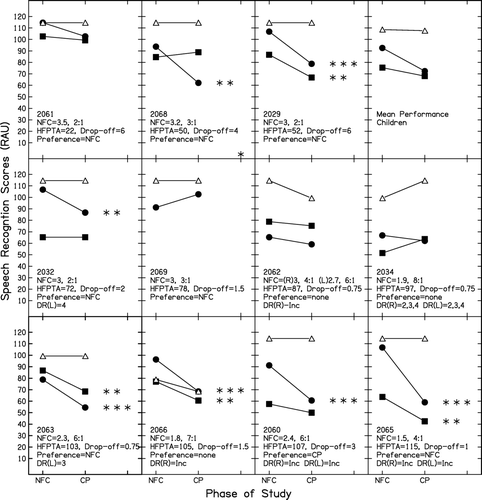
Table 4. Final results for multiple linear regression using backward elimination, repeated across measures. Predictor variables are included for plural recognition, /∫/ detection, and /s/ detection tasks, as well as for the self-reported preference measure. Predictor variables include age group, denoted by ‘group’, magnitude of high-frequency hearing loss, denoted by ‘HFPTA’, and audiometric drop-off frequency, denoted by ‘drop-off’. Excluded variables have been removed from the Table. Multiple R squared values are listed for the final equations corresponding to measures with significant findings.

